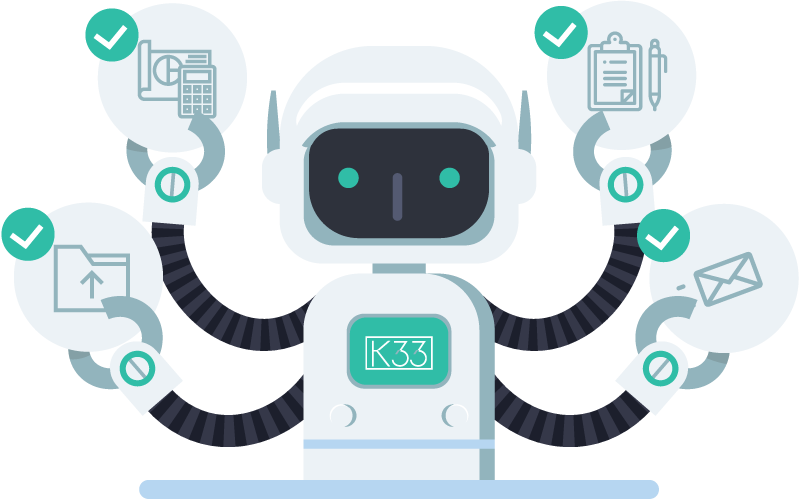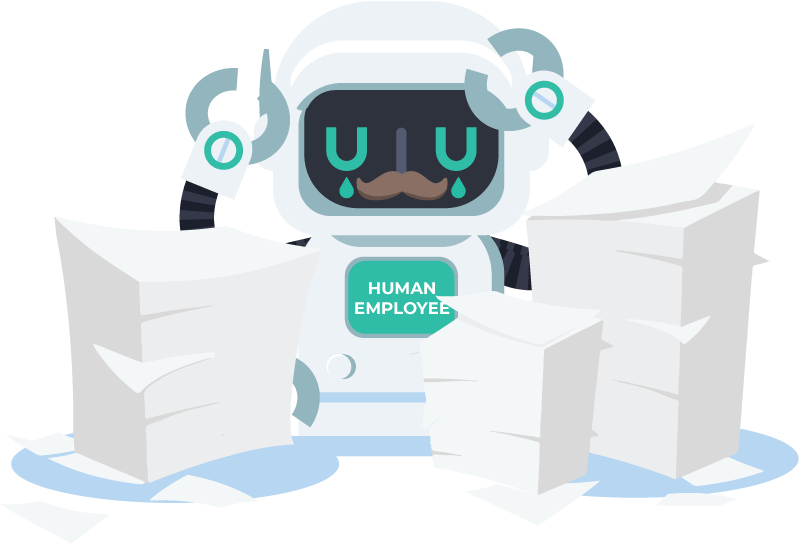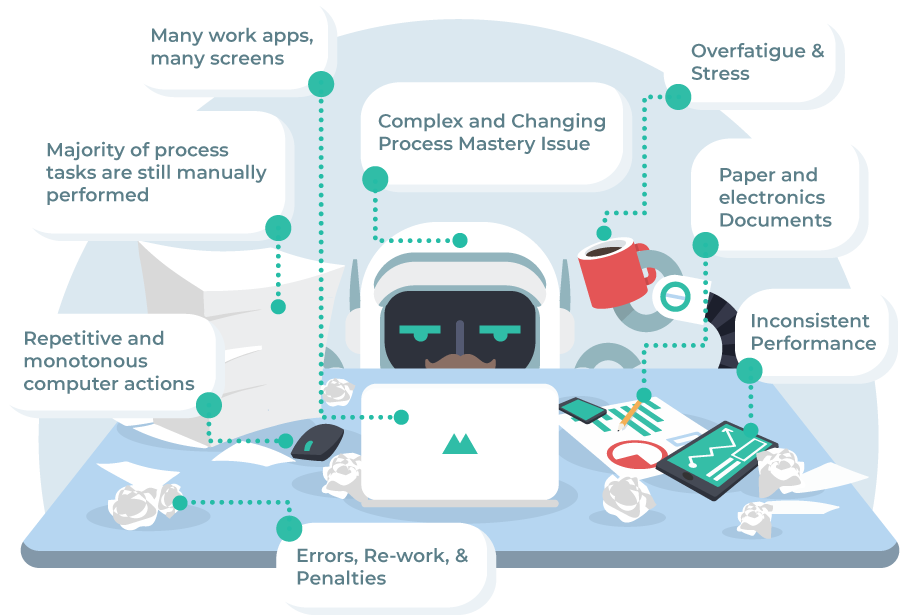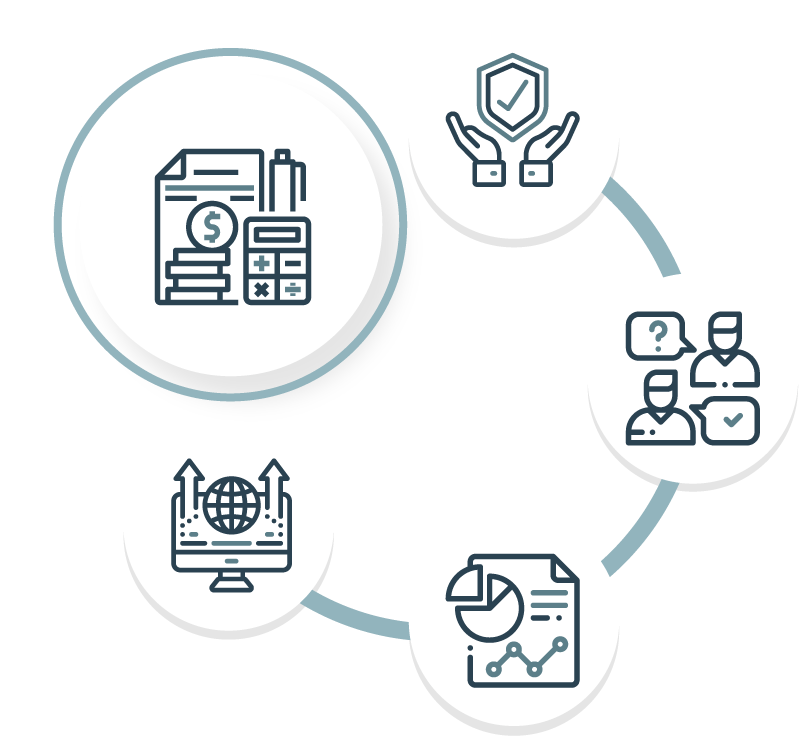Robotic process automation
What is RPA? RPA Defined
These tasks could be:
- Heavy Encoding
- Filling forms
- Copy and pasting
- Calculating
- Processing orders
- Typing responses
- Sending emails
- Transferring files
- Pulling up data
- Interacting with systems/applications
- Many others


You’d be amazed by how technology trends may have outgrown your operations. Try looking into your business processes, resource concentration, and other roadblocks. Are there still considerable paperwork, trivial and repetitive tasks, occasional errors, and process bottlenecks? Is there too much dependency on emails or meetings to get the work done? Chances are, you still operate digital-related workload manually as most companies do.
Such challenges equate to the very purpose of future-proofing your organization thru Robotic Process Automation (RPA) with us.

Why RPA? BENEFITS OF RPA
Think of the significant portion of time spent in performing basic checks, populating static forms, documenting routine activities, as well as executing periodic commands. All of these tasks are predictable to an extent, and a process owner does this for the rest of their lives.
If there isn’t much value to add in the skills that an individual possesses, it will surely have a negative causality on the feeling of empowerment, the room for application of one’s creativity and ultimately growth in an employee’s career.
This issue constitutes a significant human capital management problem recognized by the industry.
The causes are several, and any one of them could be the cause; and to effectively tackle this, the business unit and the organization as a whole must adopt a more favorable arrangement, powered by today’s technological advancement – K33 Robotic Process Automation is the solution for you.
Today’s work

Here are just some of the measurable values and proven results in adopting RPA to an organization
OPERATIONAL EFFICIENCY

Speed sensitive
- Robots can operate 24/7 without breaks
- Robots do not take any leave of absence
- Robots do the job faster at the least 3X quicker than humans

Maximized resource utilization
- Resources have more time to handle tasks requiring human interaction while robots do the time-consuming trivial ones

Dramatic reduction in errors / Increased work result accuracy
- Elimination of wrong/invalid data entries and/or omitted step/s in the process

Customer satisfaction
- Faster turn-around times results in more rapid addressing of customer needs/concerns thus improve satisfaction
COST EFFICIENCY

Optimized Resources
- Robots take over the bulk of the mundane tasks
- Human Workforce is elevated to higher value responsibilities

Improved ROI
- Realized savings from costs of maintaining equivalent human personnel
- Faster and more efficient processes lead to faster and higher revenue
How to Apply RPA? RPA APPLICATION
A suitable process for RPA may have a combination of these attributes:

Speed sensitive

Rule-based

Voluminous

Repetitive

Error-prone

Requires Irregular Labor

Expensive

Digitally interfaced
Top Processes for RPA:
- Industry-specific Processes
- Transactional
- Reconciliations
- Reports Preparation & Dissemination
- Data Entry & Migration
- Mass Emails Generation

or choose among these concepts to apply:
K 1
Choose to co-engage human-robot processes such as call centers or internal operations where Robots act as human assistants.
- Pulling customer data, service status, and other information in a single screen.
- Providing guided flows such as next steps to take in resolving customer or internal concerns
K 2
- Workflow completion such as processing of orders/requests, sending of conclusion messages or emails, handover to the next process workflow
- Recording post-call or workflow completion data
- Collating reports, file turnovers, notifications, scheduled events
K 3
- Frontline check of requirements submission and reply notification
- Retail / Remittances / Logistics / Payments – Orders processed in real time as they come in, eliminating queued personnel handling bottlenecks
K 4
Information requests such as application or service status, transaction details
- Query handling – Q&A
- Guides – Virtual walkthroughs, step-by-step guides








